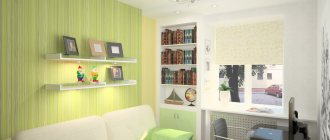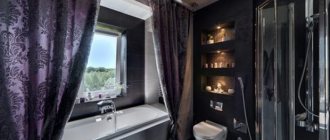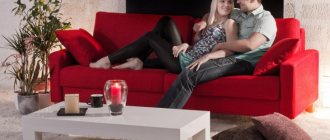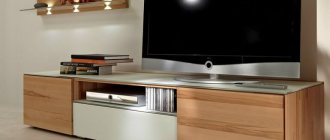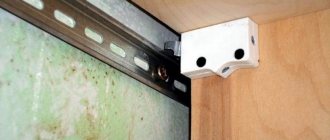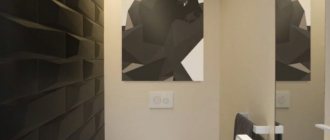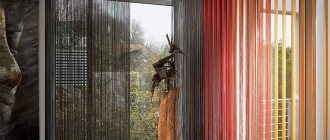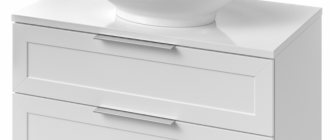Types of water-based paints
Types of paints differ depending on the filler, which is the basis of the mixture:
- Mineral - the composition includes lime and cement. Suitable for treating interior walls. Not popular due to short service life.
- Silicate emulsion paint - colored pigments and liquid glass (silicate) are added to the structure. It is durable, but does not tolerate high humidity.
- Silicone - the versatility of the mixture is due to the silicone resin that makes up the base. It is very resistant to moisture and has the ability to mask small cracks and chips up to 2 mm in size. A wall treated with silicone paint will not mold and fungi will not grow on it. The only drawback is the rather high cost.
- Acrylic water-based paint - despite the high price, is very popular among builders when decorating premises. Used for interior and exterior work. The basis is acrylic resin, which is resistant to changing weather conditions and temperature changes. Apply to concrete, glass, plaster, wood.
- Polyvinyl acetate - based on PVA glue. Painted surfaces can be washed, long service life, low price. But walls turn yellow over time, so it is not advisable to use it in the kitchen, where the atmosphere will contribute to a rapid change in color.
Paints allow you to select suitable shades of colors Source domoholic.ru
Colors and their meaning in design
Brown
The cozy, rich dark brown color will make you curl up and fall asleep. It creates an atmosphere of forest and magic. Sunny brown will take on the most unusual shapes at different times of the day.
Brown will look perfect with rich orange or muted pink.
Red
Red increases energy levels at home. This shade is quite intense. Choosing this wall paint color is intuitive and personal.
Purple increases blood pressure, breathing rate, and heart rate.
Yellow
Yellow notes capture happiness and are associated with sunlight. This is an excellent option for the kitchen, dining room, and bathroom, where this color will give you good health. In the hall, small corners, yellow will look welcoming.
Lemon coloring a space is quite cheerful, but is not recommended for the main scheme. A large amount of yellow creates a feeling of disappointment and anger.
Orange
Orange is used to create excitement and enthusiasm. It looks great in the gym, where you need to release anger and negative emotions.
Violet
The combination of purple shades is always the richest, but at the same time quite sophisticated. As an accent, it gives depth to the scheme.
Tones of milky lilac and lavender create peace without a feeling of cold.
Green
Green is the best soothing color for the eyes. The colors combine from refreshing blue, invigorating golden, delicate light green: they suit any corner of the house.
In the kitchen, this shade cools down and promotes unity and harmony.
Blue
Blue colors reduce the number of heartbeats, are considered relaxing, and are recommended for bedrooms and bathrooms. The pastel palette of the house is milky blue and can highlight the warm notes of furniture and fabrics. In living rooms and large kitchens we select bright blues and azure.
Blue is used as a main color scheme with dilution; too much of it can cause a feeling of sadness.
Neutral
Neutral tones, such as beige, milky, gray, black, are basic for the decorator.
They go out of fashion and come back again; their advantage lies in their versatility and flexibility. Black is rarely used, mainly as an accent. Experts believe that black is essential in every corner of the home. This shade adds depth to the setting.
Do you want to feel romantic and calm? A light warm or cool palette will help with this. How to choose a wall paint color to bring peace and a cozy atmosphere? Give the space a buttery, golden feel—like the kitchen. Need to feel calm and balanced? Make everything out of notes of moss and sage. What if your energy and bright personality are overflowing? Transform with rich colors.
How to understand the atmosphere of elegance and serenity? Choose neutral shades of color for the walls, such as cool grassy.
You don't have to spend a lot of money to remodel the exterior of your home. With a little pigment and a lot of imagination, you can easily change everything by using the right combination of colors to paint the surface. You can feel the way you want with the help of a brush and imagination, because choosing the color of the walls is not such a difficult task.
Color combinations in the interior (2 videos)
Variety of colors in the interior (35 photos)
Marking
The letters and numbers on paint cans are easy to decipher if you have an idea of the meaning of each of them.
Letter marking:
- VE – water emulsion.
- VD – water-dispersion paint.
- CN – composed of butadiene-styrene.
- VA – polyvinyl acetate.
- AK – styrene acrylate.
- BC – polyvinyl.
Number 2 indicates emulsion for interior work, number 1 for external walls.
Having an idea of the composition and properties of enamel, it will not be difficult to choose the one that is suitable for the given work.
Difficulties of painting walls white: main mistakes
I said earlier that white is a complex color, and many factors influence the final result. Above in the article we looked at some shades of white, matte and glossy textures, and also drew attention to the problem of cheap paint. But there are other points worth discussing too!
- It is important to remember that there is white and its shades, a base color and removal towards a cold or warm tone. There is a direct connection here with lighting, which can have some effect on tone;
- The overall interior also has an impact on color, especially the bright colors of furniture, curtains, object decor, and main accents;
Composition of water-based paint VEAK 1180
Water-based paint VEAC 1180 is universal, suitable for interior and exterior surfaces. Very resistant to precipitation, walls can be washed. The service life is at least five years, but usually it lasts much longer without noticeable damage.
Components in the enamel structure:
- Acrylic – up to 50%.
- White pigment – 37%.
- Plasticizer – 7%.
- Defoamer – 2%.
- Preservative – 2%.
- Latex – 1%.
- Thickener (CLC glue) – 1%.
In general, the components provide strong adhesion to the surface, resist moisture and mask small cracks and imperfections in the walls.
All the colors of the rainbow Source otdelka-expert.ru
What are additives for water-based paint used for and what are they?
By mixing various additives into paint, manufacturers manage to obtain coloring compositions that differ in basic quality characteristics. Non-flammable and durable, colored and non-toxic glossy paint is especially in demand among consumers. Some of the most expensive brands contain highly effective bactericidal or fungicidal additives. Among other things, almost all types of water-based emulsion contain additives that prevent the color emulsion from separating.
produced by different manufacturers can contain a significant number of additives, including:
- defoamers that reduce foaming;
- antifreeze components that prevent freezing;
- thickeners;
- inhibitors of corrosive changes;
- antiseptic components;
- plasticizers;
- components that increase the level of structural viscosity;
- preservative components.
The percentage also varies, but most often about 50% falls on defoamers, about 37% on pigments and fillers, and 7% on plasticizers.
Specifications
Based on the state standard, the technical characteristics of water-based paint VEAC 1180 include the following indicators:
- Viscosity – from 15 to 45 C.
- Density – 1.5 g/cm³.
- Dry residue up to 65%.
- Covering power (ability to hide the previous color) 120 g/m².
- The thickness of one layer is 120 – 170 microns.
- The consumption rate per 1 m² is from 135 to 270 g, depending on the surface material.
- Adhesive component – up to 3 points.
- Complete drying time is no more than 12 hours.
It is allowed to store the finished emulsion at temperatures from +5 to +45, but in hot conditions the shelf life is reduced to 1 month. Freezing is allowed, after which the quality remains unchanged.
See also: Catalog of companies that specialize in paints and varnishes and related work.
Pros and cons of water-based paints
Water-based paint is in demand due to its decent quality. At the same time, the cost of this paint and varnish product is quite affordable. It consists of polymers and pigments. At the very beginning, it is neutral in color, but then the color notes transform.
This paint and varnish material has a number of positive aspects:
- no smell;
- dries instantly;
- non-toxic;
- fire resistant;
- easy to use;
- no need to dilute with chemical compounds;
- low consumption;
- easily washed off from hands and tools after work;
- A large selection of colors allows you to choose an individual one for yourself;
- low prices for this type of material.
There are much fewer disadvantages, but they do exist: when the ambient temperature is less than +5 degrees, it is better not to work with this paint.
If the choice is made in favor of water-based paint, then all that remains is to choose the best one for yourself, after familiarizing yourself with these products in more detail.
Advantages and disadvantages
The technical characteristics of water-based paint VAEK 1180 include its absolute non-flammability, neutral attitude towards aggressive environments and environmental friendliness.
White paint Source gidpokraske.ru
Other benefits:
- Easy to use. Can be diluted with plain water from a tap or well; after use, the instrument can also be easily washed in running water.
- Non-toxic and hypoallergenic - suitable for use in children's institutions.
- Strong adhesion to many types of materials. Works well on putty, concrete, wood, plaster. The exception is metal surfaces - here you will have to choose a different type of enamel.
- After painting, you can immediately live in the room. Does not leave unpleasant odors characteristic of oil or synthetic enamel.
- Dries quickly. Design drying time is from 5 to 12 hours.
- During storage it remains smooth and uniform, does not delaminate or crumble.
- Painted walls are easy to clean without leaving streaks. Has antibacterial properties.
- Permits air (breathes), resists moisture. Can be used in the bathroom and kitchen.
There are some minor disadvantages:
- It is impossible to work at sub-zero temperatures. The aqueous solvent freezes, depriving the dye of its viscosity.
- No adhesion to glossy or metal surfaces. The reason is the same: the water component.
Walls painted with water-based emulsion Source remontidei.ru
Choosing the type of paint
The selection of paint depends on the binder polymers filling it. According to technical specifications, coatings are classified as water-dispersion, but during the purchase you may come across other names that are more often used in everyday life. So, under the general term “acrylic” all acrylic polymer compositions, which are also called acrylate, are collected. Polyvinyl acetate mixtures are called water emulsions, and butadiene-styrene mixtures are called latex. Therefore, if the choice of paint must exactly match a specific surface, it is advisable to clarify which polymer is included in its base.
Polyvinyl acetates and styrene-butadiene mixtures are not suitable for facade work, since the former do not tolerate moisture and wetness well, and the latter quickly lose color when exposed to sunlight. For the same reasons, PVA coatings are not used for painting walls in the bathroom, and acrylic styrenes are not used in rooms on the sunny side of the building.
Pure acrylic compositions are much less susceptible to external damage and the influence of weather conditions. But, like other types of aqueous dispersions, they are not applied or used at temperatures below 5 degrees Celsius. Before painting, it is advisable to bring hot surfaces (for example, pipes, heated towel rails) to around 30 degrees Celsius. Sometimes styrene butadiene is added to acrylic polymers, which further increases the coating’s resistance to moisture.
Acrylic water-dispersion compositions are the best option for interior work and wall coverings in rooms for various purposes. When choosing them, it is worth taking into account the number of washing cycles without loss of coating quality, indicated on the packaging or in the technical specifications for the product. If the specific use of the premises is such that the walls are subject to frequent contamination (children’s rooms, kitchens, workshops), then the wash resistance class of the selected paint should indicate the possibility of intensive wet cleaning using detergents (without abrasives).
Painting tools
Before starting finishing work, prepare the necessary tools, which should always be at hand.
Types of tools:
- The roller is foam rubber or fleecy.
- Paint brush for painting hard-to-reach places.
- Masking tape.
- Spatula for cleaning walls and mesh for sanding.
- Sponge.
- Paint tray.
- A bucket for putty.
- Ladder or trestle.
A set of tools for work Source remitek.ru
Dulux paint color catalog
The Dulux paint color catalog includes a large number of different shades. Colors from the brightest to soft pastels.
Attention! The colors on your monitor do not exactly reflect actual colors because the color rendering of all monitors varies. Therefore, using the tables, you can approximately determine the choice of color, followed by clarification at the point of sale and tinting the paint. Buy cheap Dulux paints here.
| The walls are painted with Dulux Ultra Resist Living Rooms and Offices in Dulux 90BG 38/185 (blue). | Color combination 90RR 76/062 (pink) and 17GG 40/107 (dirty light green) in the bedroom interior. The walls and ceiling are painted with Malerit (Caparol). |
| The walls are painted with Beckerplast 3 (Beckers) in color 10BB 83/006 (light ivory). | The walls are painted with Indeko Plus (Caparol) in color 04RB 71/092 (lilac). |
The walls are painted with Beckerplast 7 (Beckers) in color 50YR 53/011 (coffee). | The walls are painted with Tikkurila Euro Power 7 paint in color 59BB 81/022. |
The walls are painted with Dulux Vinyl Extra Matt in color 10YY 68/110 (ivory). | The walls are painted with Beckerplast 7 (Beckers) in color 30YR 21/505 (red). |
The walls are painted with CapaSilan (Caparol) in color 50YR 36/263 (pink). | The walls are painted with CapaSilan (Caparol) paint in color 80YR 76/086 (pink). |
| The walls are painted with Amphibolin (Caparol) paint in color 45YY 83/125 (pastel). | The walls are painted with Malerit (Caparol) in color 30YY 78/018 (pastel). |
The walls are painted with Indeko Plus (Caparol) in color 20YY 57/178 (pastel). | The ceiling is painted with CapaSilan (Caparol) in color 30BB 31/043 (gray). |
The walls are painted with Malerit (Caparol) in color 30BB 53/012 (light grey). | The walls are painted with Dulux Ultra Resist paint, for children's rooms in color 50GG 83/011 (pastel). |
The walls are painted with Marshall Export 7 paint in color 23YY 62/816 (yellow-orange). | The walls are painted with Amphibolin (Caparol) in color 70BG 56/061 (dirty blue). |
The walls are painted with Marshall Export 2 paint in color 50YR 83/003 (pastel). | The walls are painted with Finncolor Oasis Hall and Office paint in color 50BB 83/006 (pastel). |
| The walls are painted with Beckerplast 7 (Beckers) in color 50YR 53/011 (coffee). | The ceiling is painted with Tikkurila Euro 20 Extra paint in color 10YY 72/021 (soft white). |
The ceiling was painted with Dulux Prof Bindo 3 New 2020 in color 30YR 14/365 (burgundy) | The ceiling is painted with Dulux Ultra Resist paint, for children's rooms in color 00YY 63/024 (pastel). |
The walls are painted with Finncolor Oasis Hall and Office paint in color 50BB 83/006 (pastel). | The ceiling is painted with Dulux Ultra Resist Living Rooms and Offices in color 10YY 54/034 (soft white) |
The ceiling was painted with Dulux Prof Bindo 2 New 2018 Innetak in color 13RR 06/179 (burgundy). | The walls are painted with Tikkurila Harmony paint in color 35YY 71/474 (sand). |
| The walls are painted with Dulux Vinyl Extra Matt in color 69BG 77/076 (pale blue). | The walls are painted with Dulux Ultra Resist Living Rooms and Offices in color 68YY 86/042 (pastel). |
The walls are painted with Tikkurila Harmony paint in color 90YR 41/179 (coffee beige). | The walls are painted with Tikkurila Joker paint in color 60YR 54/028 (coffee). |
The ceiling is painted with Tikkurila Euro Smart 2 paint in color 10GG 33/404 (green). | The ceiling is painted with Tikkurila Euro Power 7 paint in color 10RR 83/009 (pastel beige). |
| The walls are painted with Finncolor Oasis Hall and Office paint in color 30YY 78/035 (pastel). | The walls are painted with Tikkurila Euro 20 Extra paint in color 50RB 73/024 (pastel). |
The ceiling was painted with Marshall Export 2 paint in color 20YY 69/120 (pastel beige). | The ceiling was painted with Marshall Export 7 paint in color 10RR 73/016 (pastel). |
The walls are painted with Dulux Easy paint in color 30YY 64/149 (pastel). | The walls are painted with Scotte R2 (Beckers) in color 40YY 41/152 (coffee). |
| The walls are painted with Tikkurila Lumi paint in color 45YY 83/062 (pastel). | The ceiling is painted with Beckerplast 3 (Beckers) in color 30YY 20/193 (coffee). |
The ceiling is painted with Tikkurila Siro Himmea paint in color 20YY 74/055 (pastel). | The walls are painted with Amphibolin (Caparol) paint in color 00NN 53/000 (gray). |
| The walls are painted with Scotte R2 (Beckers) in color 40YY 41/152 (coffee). | The walls are painted with Tikkurila Euro Smart 2 paint in Dulux 90RR 64/036 (pastel coffee). |
The ceiling was painted with Elegant Vaggfarg HelMatt-4 (Beckers) in color 30GY 75/105 (light green). | The walls are painted with Tikkurila Euro Smart 2 paint in color 52YY 89/117 (pastel). |
The walls are painted with Indeko Plus (Caparol) in color 24GY 85/110 (pastel green). | The walls are painted with Indeko Plus (Caparol) in color 70YR 27/404 (dirty pink). |
The walls are painted with Alpina Renova paint in color 50GY 52/263 (light green). | The walls are painted with CapaSilan (Caparol) in color 30BG 33/269 (turquoise). |
| The walls are painted with Dulux Acryl Mat in color 80YR 57/179 (beige). | The walls are painted with Amphibolin (Caparol) in color 70BG 56/061 (dirty blue). |
| The walls are painted with Dulux Prof Bindo 3 New 2020 in the color Dulux 50RB 52/107 (lilac). | The walls are painted with Dulux Prof Bindo 2 New 2018 Innetak in color 45YY 53/151 (mouse). |
The walls are painted with Dulux Prof Bindo 2 New 2018 Innetak in color 45YY 53/151 (mouse). | The walls are painted with Amphibolin (Caparol) in color 70BG 56/061 (dirty blue) |
The walls are painted with Tikkurila Harmony paint in color 50YR 07/162 (chocolate) | The walls are painted with Dulux Vinyl Extra Matt in color 45YY 61/368 (yellow-brown) |
The walls are painted with Tikkurila Euro Power 7 paint in color 70RB 54/110 (purple) | The walls are painted with CapaSilan (Caparol) in color 50YR 36/263 (pink) |
The walls are painted with Tikkurila Remontti Assa paint in color 60YR 40/297 (pink) | The walls are painted with Amphibolin (Caparol) paint in color 90YY 58/424 (light green) |
The walls are painted with Tikkurila Joker paint in color 50YR 09/244 (coffee brown) | The walls are painted with Dulux Ultra Resist Living Rooms and Offices in color 47RR 32/383 (rich pink) |
The walls are painted with Tikkurila Perfecta paint in Dulux 13RR 06/179 (burgundy). | The walls are painted with Dulux Velvet Touch paint in Dulux color 60YY 65/669 (poisonous lemon). |
The walls are painted with Dulux Ultra Resist kitchen and bathroom paint in Dulux 50BG 62/133 (blue). | The walls are painted with CapaSilan (Caparol) in Dulux 90RR 31/100 (coffee beige). |
| The walls are painted with Amphibolin (Caparol) in Dulux 10RR 25/437 (purple). | The walls are painted with Beckerplast 3 (Beckers) in Dulux 10BB 07/150 (blue). |
The walls are painted with Dulux Prof Bindo 3 New 2020 in Dulux 30BG 21/301 (turquoise). | The walls are painted with Tikkurila Remontti Assa paint in Dulux 00YY 18/346 (coffee). |
Preparing walls for painting
Worn surfaces with stains, cracks, chips and potholes are subject to repair. You can't paint them, it's a waste of material and time. Before starting painting work, the walls should be prepared.
- Wall cleaning.
Oil paint, old plaster and simply cracked areas are removed using a spatula. Oil paint is preheated with a construction hairdryer. The lime is soaked and washed off with a brush or hard sponge.
If the surface is smooth, you just need to remove the old coating - use a grinding machine.
- Sealing irregularities.
The cracks and cracks are carefully cleaned and slightly widened so that there are no loose edges left. Then putty or seal with silicone and leave until completely dry.
Dry areas are sanded smooth and dust is swept away.
- Decoration of corners.
Corners left neglected will ruin the beauty of the renovated room. They are decorated with a silicone corner and puttied. Then they clean and polish.
- Preparation of reinforced walls.
Surfaces with metal reinforcement are puttied to hide the mesh and make the wall smooth. To avoid rust, the metal part is treated or paint with anti-corrosion properties is selected.
How to dilute and add color
When working with paint, you must follow the manufacturer's recommendations. Failure to comply with the technology will result in the composition being too thick or liquid. In the first case, it will look like poor-quality whitewash, and as a result of using a liquid solution, unsightly streaks will form on the surface.
https://www.youtube.com/watch?v=rB-i9pDQEBM
When painting with a spray gun, the paint is diluted with ether, alcohol or distilled water. This must be done both at the beginning of work and before applying the second layer, while the composition is diluted directly in the spray gun bottle. In appearance, the dye should resemble full-fat milk.
The classic emulsion has a white color, which can be given any shade. This can be done using special colors. When tinting yourself, it makes sense to make a supply of solution for subsequent renewal of the coating. A special thinner-conditioner is added to water-dispersion paint for ceilings.
First, the emulsion is diluted in a small container and applied with a roller to a cardboard sampler. The choice of color scheme most often depends on the room: if the windows face south, the room is cooled with blue, green and purple paint; the room in the northern part of the house is painted in shades of yellow, red or brown.
To protect against streaks, use a tinted primer. It also allows you to make the color of the coating more saturated.
Video description
For useful tips on painting, watch this video:
After long-term storage or defrosting, check the quality of the application on the wall.
Then they are tinted with a previously prepared colorant. You need to dilute the entire jar with color at once to get a homogeneous mass. Color paint is prepared 10 percent more than necessary in order to leave a little of the same color in stock. Sometimes you have to renew some areas so that the color does not differ. The color is made a little darker than desired, because after drying it becomes lighter.
Paint a small section of the wall and determine the result achieved. If the color is right, you can start.
Manufacturers produce ready-made colored VE mixtures, so you don’t have to bother with tinting, but just take a ready-made one.
Choosing the right shade of white
The first problem may arise already at the place of purchase of wall paint, since white is not one specific color, but a whole range, a set, if you like, a family of shades, which consists of dozens of different tones, matte and glossy, warm and cold, bright and dim. The general list includes sterile white, pearl and porcelain, frosty white and snow color, milky, cream and ivory, as well as opal, moonlight, coconut... and also the color of white chocolate or sea foam, flour, pearl, the color of paper and parchment. It’s very easy to get confused, especially when you don’t understand the combinations of white with other colors and shades well, and you don’t know how external factors can influence a given color, giving it different shades!
Warm white color is not suitable for decorating a room in minimalism, but goes well with the requirement of building a visual picture in pastel colors;
Video description
You can see how to paint walls when carrying out repair work in this video:
Layer after layer is overlapped by 5-10 cm, so there will be no gaps and the boundaries of the previous layer will not be visible.
Application is carried out as quickly as possible, so that later drying occurs more evenly and the VE does not have time to thicken.
The ceiling and high walls are painted with a roller mounted on a long rod.
For large volumes use a spray gun. The speed of the mechanism is up to 150 kW. m/hour.
Allow the surfaces to dry for an hour and repeat the application of VE perpendicular to the previous layer.
They check for any flaws and correct them immediately, without waiting for complete drying.
During painting, horizontal and vertical layers alternate Source guruotdelki.ru
Briefly about the main thing
Even a novice craftsman can use water-based paint.
A large selection of “water emulsions” will make it possible to choose exactly your option.
Acrylic paint VEAC 1180 is a leader among similar materials.
Resistance to humidity and environmental friendliness make it possible to use “water emulsions” in bathrooms, kitchens and children's bedrooms.
Painting rules require that work be done quickly so that the composition does not have time to thicken or dry out excessively.
Ratings 0

